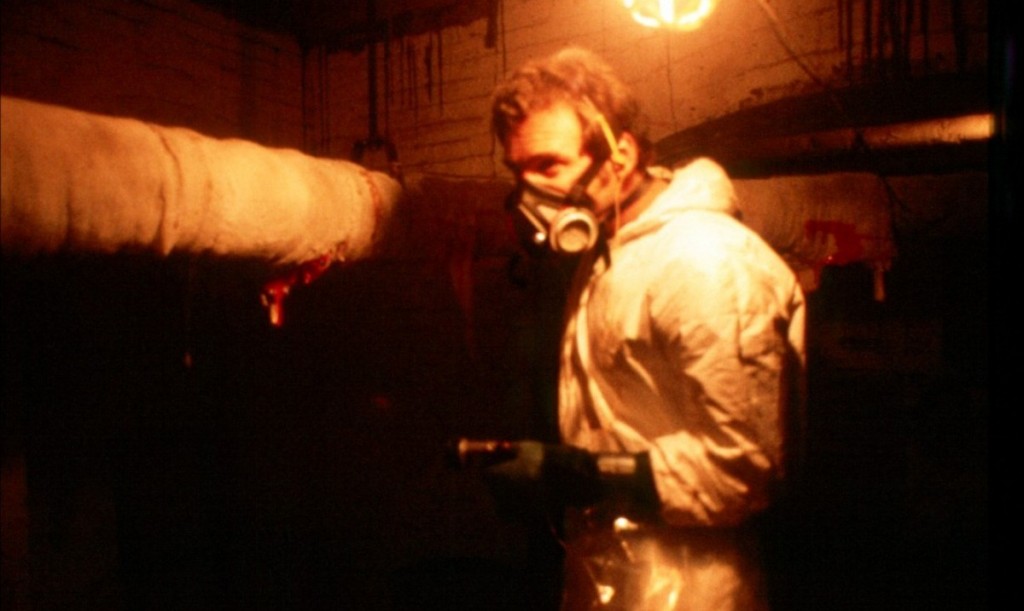Culture
The Bloody Truth: Session 9

In The Bloody Truth, Calhoun Kersten looks at the deeper meanings within one of film’s most subtext-heavy genres — horror. Warning: Spoilers ahead.
Horror movies have a tenuous relationship with the world of psychology. Often they employ pop psychology to explain away the faults and flaws of the haphazard characterization, but every so often, pop psychology isn’t such a bad thing. In fact, it can lead to something deeper, whether this is done on purpose or inadvertently. A lesser-known example is director Brad Anderson’s 2001 psychological horror film Session 9. While Session 9 may not have overwhelmed the box office, the movie received a solid amount of critical attention upon its release. Partially because of Brad Anderson’s previous directorial efforts, both quirky romantic comedies, but also because of its atmosphere, Session 9 has become a cult favorite over the years.
On the surface, Session 9 is already, admittedly, a complex film. Born in the age of the scary movie where it wasn’t considered horror without a twist ending, Session 9 delivers on that front. But to sum it up as a product of its time period, one must engage with the movie on a deeper level. Nevertheless, it’s important to understand the psychological elements at play in any given reading of the film. Session 9 follows an environmental hazard removal team who are charged with removing asbestos from a dilapidated asylum. In true terror fashion, the unsettling atmosphere gives way to an unseen assailant who begins to pick off members of the team, one by one. As most reviews will tell you, the film builds tension through its withholding, until the film reveals the mysterious killer to be none other than our protagonist. Truth be told, horror movies have used the “unreliable narrator” tactic for years. It is certainly no new development, but it is the glimpses into the fractured psyche of our protagonist, Gordon, that provide the film with a deeper meaning than “man sent into a murderous rage at creepy old asylum.” Instead, the film lends itself to a different reading, suggesting that there is something else at play.
One of the seemingly minor elements of Session 9 is Gordon’s backstory. He is a new father and a seemingly devoted husband. The few instances where we see Gordon in his home life, it is presented as tense and jarring as opposed to the uncomfortably serene setting of the asylum. The scenes are filled with loud kitchen noises, the baby crying, with claustrophobic camerawork and a mounting sense of tension. The audience watches in shock as Gordon strikes his wife for accidentally spilling boiling water on her husband. These make up the little bit of character development that is given to Gordon.
While the end of the film would have you believe that the violence in the film has taken place as a result of dissociative identity disorder, or as one reviewer pointed, possibly a protective albeit malevolent spirit that inhabits the asylum, there is a much simpler reading of Session 9. At the heart of it all, Gordon is a man trying to live the American Dream. He’s got a wife, a baby, a job, and a home. As the movie states very early on, Gordon is financially unstable, hence his insistence on taking the job at the Danvers State Hospital. His wife and child are no longer a source of happiness, but rather, a burden. He’s barely able to perform his “husbandly duties” of providing for his family. His American Dream is slipping away from him, giving way to the harsh reality of his less-than-perfect life.
The violence in the film serves as Gordon’s re-assertion of his virility as a male. While the predominant violence is Gordon’s attacks against his crew members, even this can be read as a display of dominance. Gordon is establishing himself as alpha male and asserting his power as the leader of this group. This was done early on with his position of power within the company, but as Gordon becomes increasingly unstable, even though the audience does not necessarily see all of this, the power struggle becomes physical. However, the most memorable and arguably upsetting instance of violence is Gordon murdering his wife and child – the source of the American Dream and simultaneously, the thing standing in the way of him achieving it, must be destroyed.
Session 9 is, effectively, an assault on the male identity crisis. Increasingly emasculated by his inability to provide for his family, Gordon resorts to brutality to establish his identity as an American male. Therefore, the source of conflict and the resulting violence is the result of an identity in crisis. However, it is not as simple as dissociative identity disorder, but rather the identity of the red-blooded, all-American male. Session 9 reasserts this notion with good old-fashioned violence, revealing the true source of horror to be mankind himself.